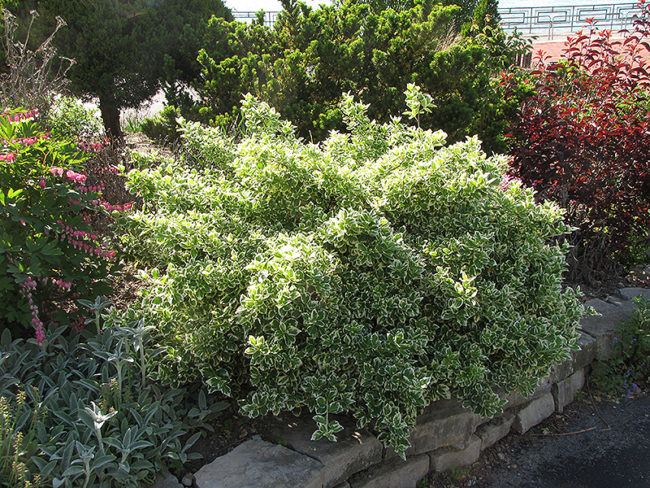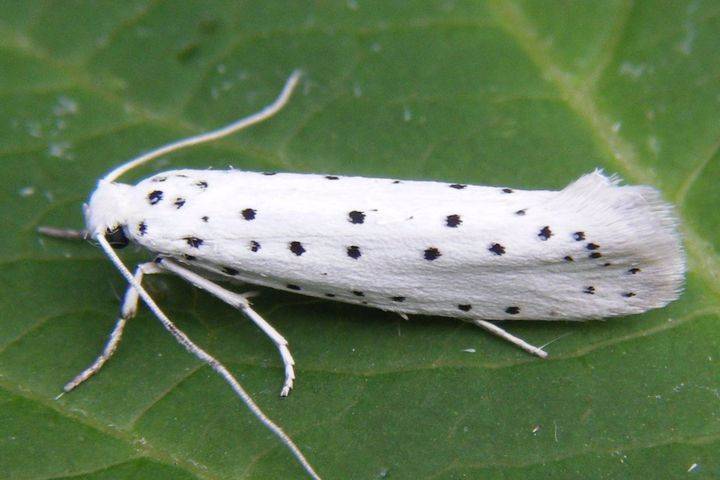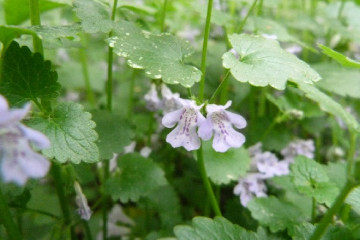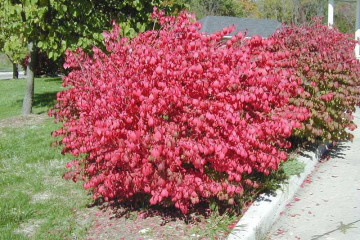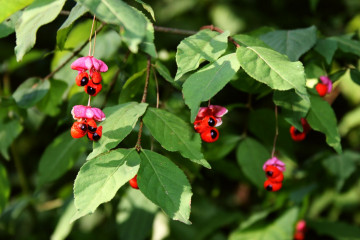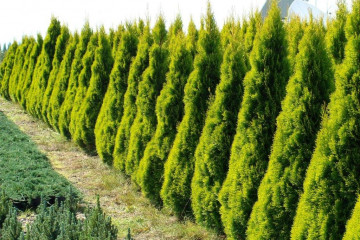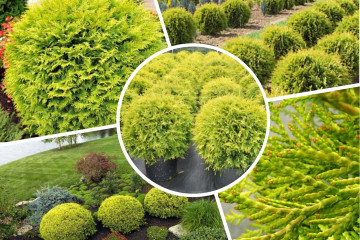Fortune's euonymus "Emerald Gold" - application in landscape design
Content:
Plants of the euonymus family are considered to be one of the most spectacular and attractive shrubs. The optimum plant height is ideal for landscaping applications.
Fortune's euonymus Emerald Gold. Breeding history and species description
The shrub of the euonymus family is low and at its peak reaches only 20 centimeters, therefore it belongs to the dwarf class. Has the name Euonymus fortunei Emerald Gold and is translated from Latin as "glorious tree". Leaves are flat, greenish-yellow in color. The euonymus stretches vertically upwards. In winter, its hue changes from yellowish to pink. The shrub is native to China and South Korea. It belongs to the thermophilic species. It is strongly not recommended to plant it in regions with a high temperature drop.
The variety is widespread in the countries of China, Korea, Japan and southern Russia. In total, there are about 200 species in the euonymus family.
The history of the emergence of the shrub is little known. This type of dwarf shrub was introduced by Robert Fortune, a famous botanist from China in 1908. The plant got its name in honor of the one who managed to discover it, and the middle name Emerald Gold was given thanks to the emerald gold foliage.
When the euonymus shrub blooms
Euonymus Emerald Gold is commonly called a dead bush. This name was given due to the fact that inconspicuous white inflorescences bloom on its stems, after which bright flattened balls of purple, almost red color are formed. Fruits in the form of small bolls that ripen in September, but inconspicuous flowering occurs in late May, early June.
The size of an adult bush reaches a maximum of 30 centimeters, but the branches can twist up to 2 meters in height.
The use of euonymus in landscape design
Fortune's eonymus is used quite actively in landscape design. It looks especially attractive in the decor of the landscapes of city buildings, personal plots, park areas and shops. The plant has many positive qualities:
- the shrub is unpretentious to care for;
- leaves retain their green appearance for a long time;
- in autumn, the bush takes on a pleasant reddish tint.
Planting next to the following flowers and plants is highly discouraged:
- cherry magnolia;
- Isabella grapes;
- chestnuts.
Incompatibility in landscape design lies in the fact that all these plants are united by the fact that they have a fairly active developed stem part and the same pests settle on them.
Plant care recommendations
It is easy to care for an evergreen euonymus. The main rule is compliance with all conditions:
- the right soil is the first thing to look out for. The fact is that the root of the bush is almost on the surface and is very susceptible to disease. Drainage and gentle loosening twice a week in order to enrich the root system with oxygen is the main thing with proper care;
- euonymus is prone to rapid root decay, which is why it is important to observe moderate but frequent watering. If the shrub has been growing for more than several years, then it is recommended to water it no more than 2 times a week;
- ground cover euonymus has the only weak point - sensitivity to light. It should be moderately intense, but without scorching sun rays, slightly darkened;
- it is required to feed the plant with mineral fertilizers throughout the season, and to make complex fertilizing in spring and autumn with compost fertilizer;
- it is necessary to cut off the crown of the euonymus as needed. The more often this procedure is carried out, the more spectacular and beautiful the shrub will look.
How to care for a plant in winter
The euonymus Emerald of Haiti is considered a fairly hardy plant. Any shrub can envy its winter hardiness. However, you should not neglect the shelter procedure. At temperatures below 25 degrees, it is necessary to cover the plant with dry foliage at a distance of 20 centimeters or with special material.
How to properly propagate euonymus
Sunspot Fortune's euonymus is easy to reproduce in various ways. Reproduction by layering is quite simple, but it takes time. The roots of the plant are located close to the ground, it is thanks to this that, where the branch and the ground converge, a rooted cut is formed. It is ideal breeding material.
The simplest vegetative method is cuttings. There is no need to carry out special preliminary procedures before grafting. It is enough just to cut the shoots annually and stimulate the soil. For reproduction of varietal euonymus it is necessary:
- cut young cuttings from a young shoot 10-17 centimeters long;
- prepare the soil fertilized with compost fertilizer, plant cuttings there and water for a month until its own root system appears. If the root system does not begin to grow for a long time, the next time the cuttings need to be lowered into the substrate for a couple of hours;
- then transplant to any suitable place in the open ground.
The shrub reproduces quite easily by dividing into bushes. The division scheme looks like this:
- the roots of the euonymus must be dug up and divided into several parts so that the stems have buds;
- treat the roots with coal;
- drop off at a new location.
There are some gardeners who enjoy growing euonymus from seeds, but this procedure requires a lot of attention and effort.
Plant diseases and pests
The plant is quite resistant to various diseases. With timely care and proper watering, it is not even subject to root rot. However, if sores appear on the roots, it is necessary to urgently treat the plant with chemicals and make the necessary adjustments to the care. Possibly reduce watering.
Less common, but the following diseases occur:
- shield;
- spider mite;
- aphid;
- apple moth.
Thus, the Fortune Emerald Gold shrub is one of the most popular varieties of euonymus. The shrub, due to its frost resistance and unpretentious care, is a favorite plant among gardeners and landscape designers.
